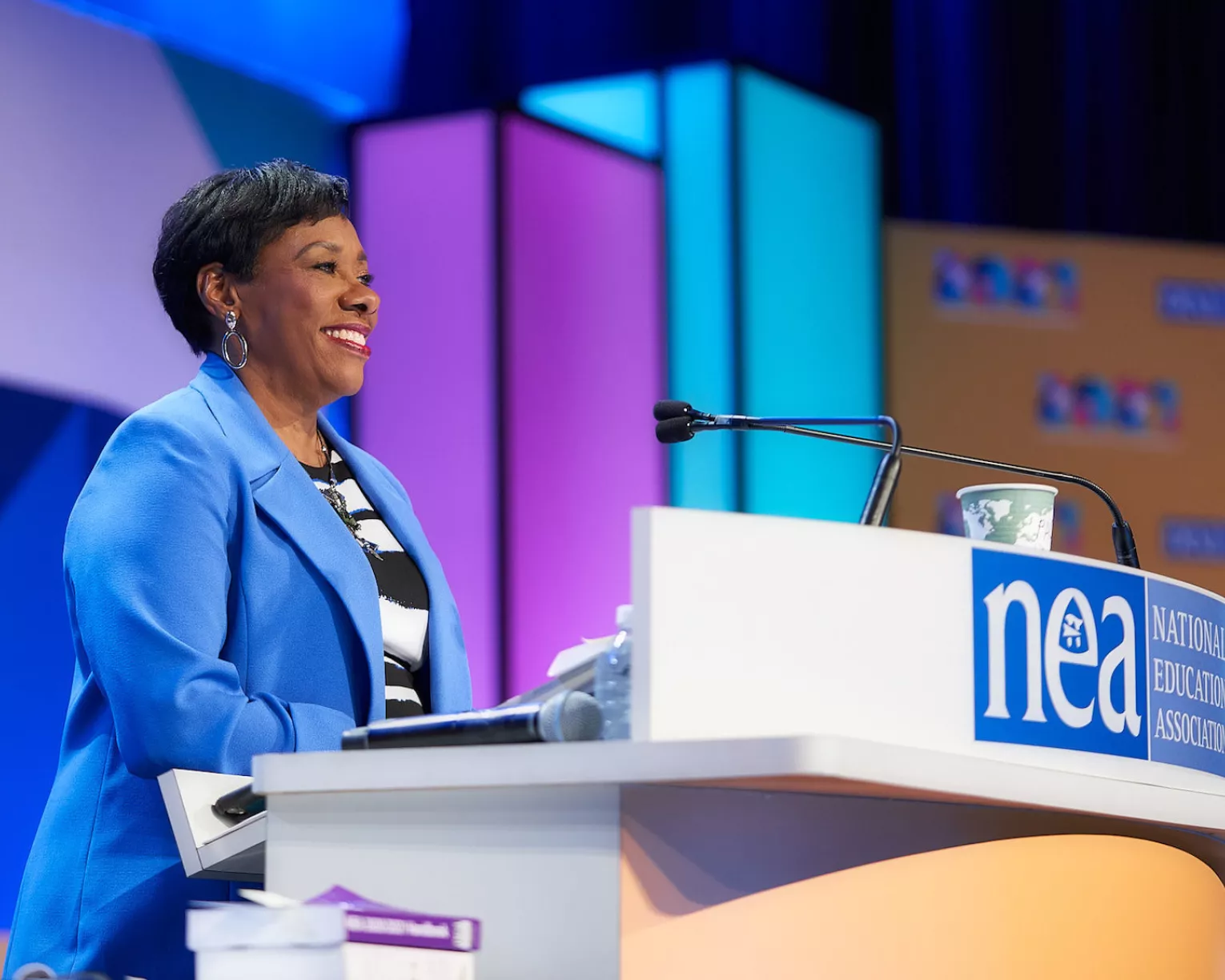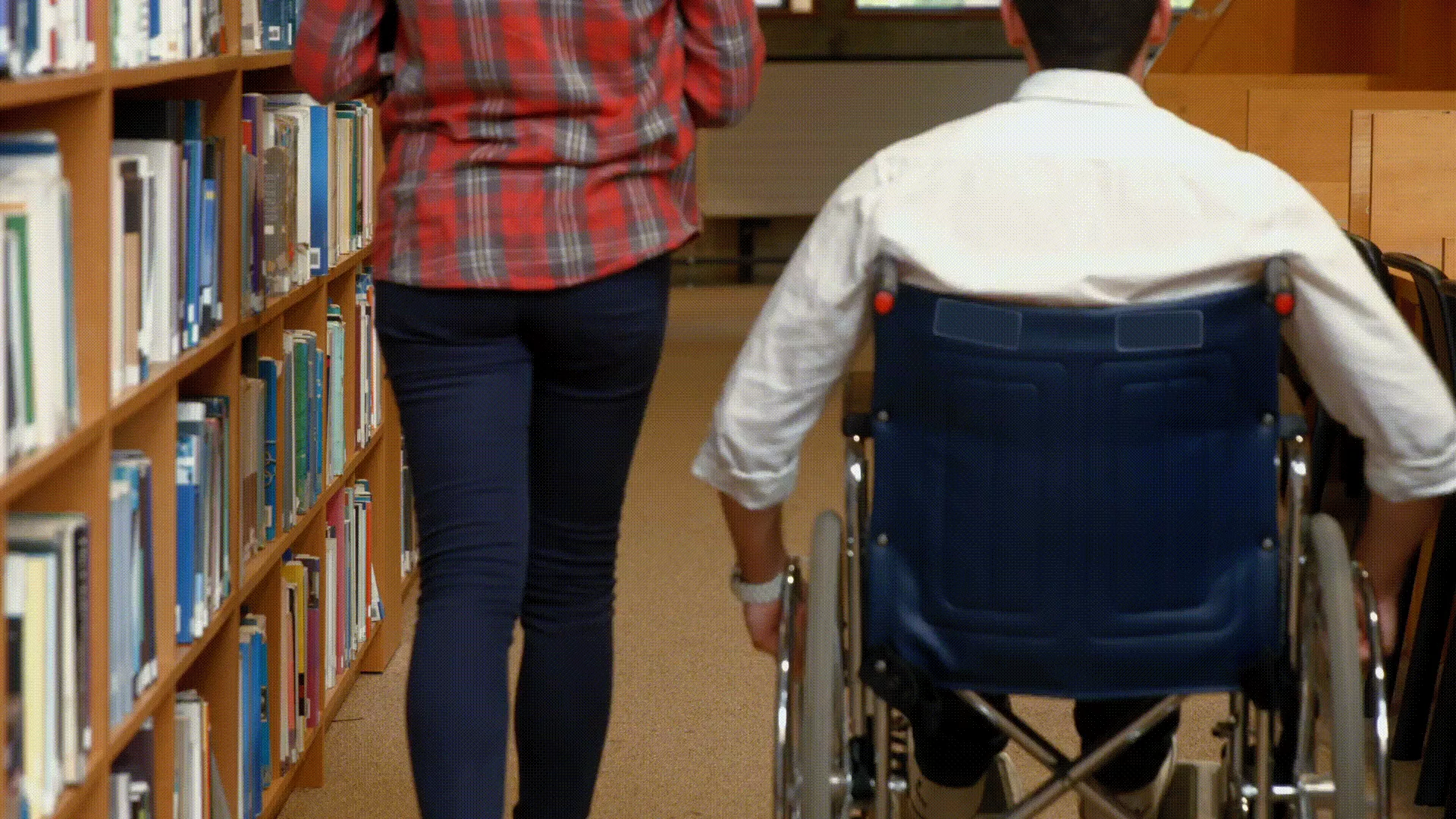Key Takeaways
- Learning job skills and to live independently is very difficult for a large population of students, but their work doesn't count toward the federal definition of a diploma.
- Graduation rates impact a school's federal improvement status.
- When adjusted diplomas for students with exceptional needs don't fully count, the programs that help them succeed are disincentivized.
Niels Pasternak, an Oregon special education teacher and the founder of Educational Equity Now, a nonprofit promoting inclusion, anti-racism, social justice and equitable educational opportunities, works with students who have profound special needs. There are high school-aged kids in his program who are learning to walk or talk, to feed themselves or use the bathroom, and who sometimes work with educators who don’t believe they can progress in meaningful ways.
But Pasternak believes in everyone’s ability to learn.
Like the student who came to him at 20 years old after recovering from a coma from a terrible car accident. He was unable to talk, was confined to a wheelchair, and had to be tube fed. It appeared that he didn’t understand what was being said to him and he’d regularly have behavioral outbursts. He’d been living in a nursing home with elderly residents and was often parked in his wheelchair facing a wall and left alone.
It turned out, he did understand words and still knew how to read but he couldn’t find a way to communicate. When Pasternak showed him pictures and words, he could identify which word went with the matching picture. He then qualified for a communication device through his IEP, and that opened up his world.
“That device allowed him to tell us things he couldn’t before,” Pasternak says. “His frustration lowered and his outbursts eventually stopped. He also started laughing a lot.”
The young man, who many predicted would remain in a vegetative state in an institution, now lives in a group home and has a job delivering packages on a motorized wheelchair he learned to operate in school.
He worked extremely hard to learn skills in his special education classes to live more independently and get a job, but he didn’t qualify for a regular high school diploma. Despite his hard work, he wasn’t included as a member of his high school’s graduating class or in the school’s graduation rate.
“We need alternative pathways to graduation because many special education students need to get different things out of education,” Pasternak says. “Not every student can go to college, but all students can learn. They can improve social skills, communication, explore strengths, needs, preferences and interests, and develop vocational skills in areas that they are interested in. They can find ways to be actively involved in their communities and help themselves and others and to feel good about themselves and their life situation.”
All of that should be rewarded, says Pasternak, with a diploma that actually counts.
The programs, devices and strategies Pasternak and special educators around the country employ for students with significant needs require funding. If the students who benefit from them aren’t counted as part of the federal definition of an adjusted graduation rate – a data point that impacts a school’s federal improvement status – it disincentives investment in many special education programs, Pasternak argues.
“If there was an alternate diploma that these students could achieve, and one that counted in the graduation rate, it would be a win for everyone,” he says.
According to federal law, a regular high school diploma does not include a recognized equivalent of a diploma, such as a general equivalency diploma, certificate of completion, certificate of attendance, or a diploma based on meeting IEP goals.
That, Pasternak says, should change. Changing federal law is a long and complicated process, but Pasternak is starting his advocacy in his home state of Oregon.
In 2012 the Oregon Department of Education (ODE) included the “modified diploma” as a graduation option that counts in the graduation rate. (Oregon reports the data annually but it is not included as part of the state’s ESSA improvement framework.) This diploma is intended for students who have demonstrated an inability to meet the full set of academic standards required for a diploma. It’s similar to the standard diploma because it requires 24 credits (same as a regular diploma) and 12 of those meet the needs of the individual student as specified in the IEP and align to the appropriate grade level academic content standards.
Yet the modified diploma is still out of reach for many of Pasternak’s students. He works with students on feeding schedules and bathroom schedules and are still learning how to get through the day without diapers. Most of them have IQ scores lower than 55, which is not an indicator of potential but an indicator of how much support a person might need for an equitable opportunity to realize potential, Pasternak says, because he has seen students accomplish tremendous goals in his life skills classes.
Many of his students can’t reach the goals of the regular or modified diploma, but they work just as hard to develop skills.
Pasternak points to the nonverbal student who learns to use an augmentative communication device on an iPad, or the student who learns to grow plants and pull weeds in the school garden and now works at a farm cooperative, or the student who can’t walk but swims twice weekly in the YMCA pool, or the student who learns to use the bathroom and stay dry all day as well as ride a tricycle to deliver items throughout the building.
“The work they’re doing has value,” Pasternak says. “Not every student can read, write and do math, but all students can learn and develop interests and find ways to be involved in their communities, even to get a job, and have more independence, and not need as much support as adults.”
In 2014, ODE adopted the extended diploma which requires only 12 credits for graduation and does not require that all of the coursework to be aligned to academic content standards. The extended diploma would be an accessible pathway for many students in Pasternak’s life skills programs. Unfortunately, it doesn’t count toward graduation rates defined by the federal government.
So the students who might not learn Spanish or algebra but overcome enormous obstacles and sometimes work twice as hard as their classmates are still being penalized.
The extended diploma is a step in the right direction, but Pasternak wants it to go further and allow it to help more students cross the finish line.
“An extended diploma is a great idea – we’re halfway there, let’s just make it count,” says Pasternak. “This would be a huge step forward for inclusion.”
Pasternak raised this issue with the Oregon Education Association (OEA) as a delegate to the state affiliate’s annual meeting. Eventually, with help from their advocacy, lawmakers passed Senate Bill 744, which directs the state Department of Education to evaluate how Oregon assesses student knowledge in their pursuit of a diploma. Among other things, education leaders are tasked with comparing diploma requirements in different states, making recommendations for state requirements to reduce disparities, and determining whether requirements for diplomas have been applied inequitably to different student populations.
OEA has emphasized to ODE the importance of community engagement for this review, and they are gathering names from their membership of those who want to be involved. It’s more than a listening session.
They have held 19 virtual community forums; opened a statewide survey; met with focus groups representing students, families, and educators, particularly students from historically underserved student groups. ODE contracted with an organization called Oregon Kitchen Table to lead the outreach.
ODE will be responsible for reviewing diploma actions, essential skills, and then authoring a report and recommendations on how these should change, which is why it is critical Niels Pasternak and his colleagues around the state are at the table.
"A lot of the laws that we have are not meant to last forever and we shouldn’t let the fact that a new, and good, idea is not in compliance with current law stop us from working towards it,” says Pasternak. “Many NEA members are political activists who advocate for changes we believe in. I believe it’s time to stop pressuring all students to learn the same things along the same timelines and start empowering students to develop their unique strengths and talents. We need an education system that believes in empowering and inspiring future generations and which values growth, care, and connection more than predetermined measures of proficiency, pressure, and compliance.”



